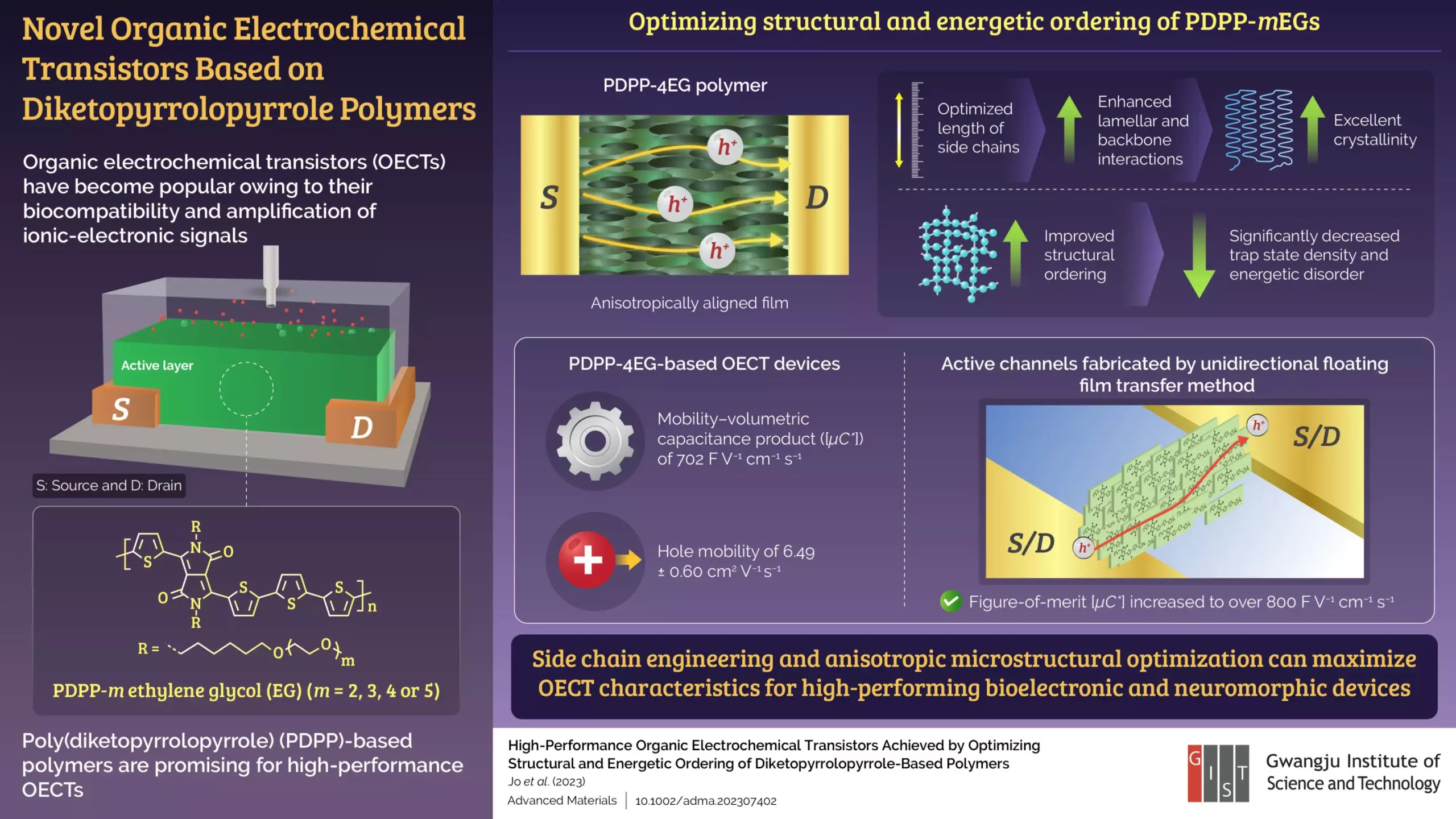The research community has recently shown a significant level of interest in organic electrochemical transistors (OECTs) due to their biocompatibility and unique characteristics. These characteristics include the amplification of ionic-electronic signals and the ability to detect ions and molecules. In order to achieve these capabilities, OECTs must have efficient transport of both ions and electrons. One approach that has shown promise is the use of conjugated materials grafted with hydrophilic glycol chains. These materials combine desirable levels of efficiency with softness, allowing ions to permeate through their surfaces. However, they do exhibit imperfections in semicrystalline characteristics and disordered fractions when converted into solid films.
In order to optimize the steady-state performance of OECTs, researchers must focus on both molecular design and structural alignment. By reducing energetic and microstructural disorders in the films, the performance of OECTs can be improved. With this goal in mind, a group of researchers led by Professor Myung-Han Yoon from Gwangju Institute of Science and Technology in Korea conducted a study to create high-performance OECT devices. They utilized poly(diketopyrrolopyrrole) (PDPP)-type polymers as active layers and modulated the number of repeating units of ethylene glycol (EG) side chains in PDPP.
The researchers examined the performance of the different polymers by conducting various measurements and tests. Ultraviolet-visible (UV-vis) absorption spectroscopy confirmed the formation of J-aggregates in the polymers with three, four, and five EG side chains. Cyclic voltammetry measurements demonstrated a decrease in oxidation onset values as the number of EG polymers increased. The researchers primarily focused on charge carrier mobility to distinguish the performance of the polymers. The OECT device based on PDPP-4EG, fabricated via spin casting, showed optimal performance with a figure-of-merit value of 702 F V-1 cm-1 s-1, a charge carrier mobility of 6.49 cm2 V-1 s-1, and a transconductance value of 137.1 S cm-1. This polymer also displayed low subthreshold swing values and a low number of interface trap states.
To further optimize the performance of the OECTs, the researchers used the unidirectional floating film transfer method (UFTM). This method allowed for structural alignment along the OECT channel and resulted in an even higher figure-of-merit value of over 800 F V-1 cm-1 s-1 for PDPP-4EG film-based OECTs. The UFTM caused the J-aggregates to undergo unidirectional compression when the polymer film was added to a hydrophilic liquid. The use of this method resulted in a remarkable improvement in the performance of the OECTs.
Professor Yoon highlighted the long-term implications of this study, emphasizing the potential for organic mixed conductors in the development of neuromorphic devices, particularly in the era of artificial intelligence. High-performance organic materials can be applied to various fields including next-generation wearable sensors, computers, and healthcare systems. By overcoming the limitations of organic materials, there is the potential to enhance human convenience and improve numerous aspects of daily life.
Overall, this study conducted by Professor Myung-Han Yoon and his team provides valuable insight into the optimization of OECT performance. By focusing on molecular design, structural alignment, and the use of PDPP-4EG as an active layer, the researchers were able to achieve high-performance OECT devices. The findings of this study contribute to the development of organic mixed conductors and their potential applications in various fields. With further research and advancements, the potential for organic electrochemical transistors to revolutionize numerous industries is promising.



Leave a Reply